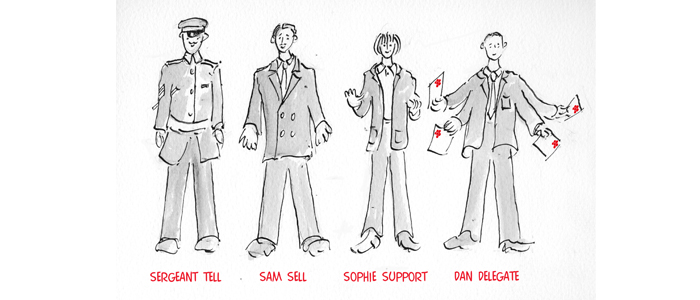There’s no one leadership style that will work in all situations. We look at the four main identified leadership styles and recommend which style to use in which circumstance.
Does it matter if there isn’t really such a thing as a definitive leadership style? No, not really, because how you lead should be influenced by the situation, and by the people you are leading. A prescriptive style really won’t work every time, and nor will a completely ‘delegative’ style.
There are compelling reasons why.
People are different, and react in individual ways to different types of approach. They need different styles of leadership depending on the circumstances, their level of ability and their confidence and willingness to do the job. An intelligent approach to leadership is flexible and sensitive to the needs of others and to the individual situation.
Even when you’ve got your vision, your passion, your strategy and your plan, sometimes you will fail if, in practice, there is no flexibility – the one factor that distinguishes success and failure in leadership. By assessing circumstances and people on an individual basis and reacting accordingly you’ll become a better, more effective leader.
Most people naturally prefer one leadership style, though in fact there are many. You could choose anything from ‘command and control’ through to ‘participative’ or ‘delegative’, according to the demands of the situation.
The truth of the matter is that no one style of leadership is right for every person or every situation. Here are some that have been identified:
- Telling – traditional ‘command and control’. You tell people what to do and monitor their work closely. Then you tell them what to do next.
- Selling – explaining the whole task and persuading the person of the need to do it, before giving them the jobs they need to do. ‘Ownership’ of the job still remains with you.
- Supporting – including people in ownership of the job and inviting their participation in designing and planning solutions.
- Delegating – giving away the whole job to someone, only retaining ultimate accountability for its completion.
Which leadership style to use?
Your decision depends on two factors:
Circumstances
The more urgent, dangerous or critical the situation, the more you should veer towards the ‘command and control’ end of the continuum. If the house is on fire, don’t try to engage everyone’s inspired motivation and commitment: bark orders!
As a leader in these situations you are expected to take control. Provide clear direction and, if necessary, instructions, to get the job done.
Willingness and ability
What we mean is simply their willingness and their ability to carry out the specific task at hand, rather than their age, length of service, level of qualification, or anything else to do with them as an individual.
If a person is unwilling, they are resistant to doing the task for whatever reason, and if they are unable to do the task, they lack the necessary skill set. The more unable and unwilling they are, the more your style should move to the left-hand ‘command and control’ end of the continuum.
This gives you a guide as to how to match your leadership style to the ‘maturity’ of your ‘follower’: start where they are…

